Thuja spherical
In order to decorate your backyard or garden plot, it is enough to think over a few interesting elements of it. It is best if these are natural plantings that will fit well into the landscape design and will delight the eye all year round. Ideally suited in this case thuja, which for a long time retains its well-groomed appearance and is quite unpretentious in urban conditions.
Content:
- What is thuja and the variety of its varieties
- Thuja globular and its features
- Rules for the care of a spherical thuja
- Planting and breeding shrubs
What is thuja and the variety of its varieties
Tui are evergreen trees from the cypress family of symmetrical shape. They have a dense crown, and dense scaly needles that lie crosswise. In young trees, the needles are needle-shaped. In nature, these trees, or rather shrubs, reach a height of 15-20 meters on average, but they can be much higher - up to 70 meters. In artificial conditions, they are generally 2 to 6 meters high.
All thujas have a wonderful, unobtrusive and pleasant smell, there are simple flowers and cones that may not form. All thuja are an excellent material for hedges or landscaping areas, which is widely used in the art of creating topiary.
Thuja varieties differ in the shape of the crown: pyramidal, spherical, columnar, kegle-shaped, umbrella-shaped, saucer-shaped and others. Almost all of them are used in the design of plots and the creation of green fences.
Thuja globular and its features
Thuja spherical is a dense shrub with vertical or rounded-conical branches. The needles can have different shades, and the thuja itself grows slowly, changing the color and structure of its needles during the growing season. An adult spherical thuja can reach three meters in height, and the diameter of a plant can be about a meter.
Thuja globular is undemanding to soil, grows well in shady areas, but develops better and becomes more durable in well-lit areas.
Thuja is also good because it carries polluted city air, smoky, dusty and gassed. Also, thuja globular is a frost-resistant plant that can withstand temperatures below 40 degrees. However, while the plant is young, it is better to cover it for the winter, having previously pulled the crown with twine. In artificial conditions, a plant can live long enough and up to 150 years, or it can wither quickly, within several years, if handled incorrectly.
Rules for the care of a spherical thuja
When cutting a thuja, moderation must be observed, since a strong pruning will greatly weaken the plant. It is better to carry out the first pruning in the third year of the plant's life, before that, the tips of the shoots are cut off from the plant in order to cause stronger tillering. After they already start shape the crown of the thuja at will, cutting off the apical shoots, branches that go beyond the desired shape. In addition to maintaining a beautiful shape, pruning contributes to the "rejuvenation" of old thuja areas.
Thuja should be watered regularly in the first month of planting, then it should be watered only once a week, and in severe drought, a couple of times a week, 10-15 liters per plant. Thuja reacts to the lack of watering by thinning the crown. A couple of years after planting, it is advisable to feed the thuja with mineral fertilizers, adding them in the spring. You need to loosen the thuja shallowly, it responds well to mulching and it is better to do this immediately after watering.
An important point in caring for thuja is regular weeding of the near-trunk area and careful loosening of the soil on it. This ensures the access of a sufficient amount of moisture, minerals and oxygen to the roots of the tree and prevents the uneven branching of its crown.
Planting and breeding shrubs
It is better to propagate thuja vegetatively: by division, cuttings and horizontal layering. It is too difficult to grow from seeds. If you need to grow a thuja of a certain shape, then trees of different shapes can equally grow from seeds of the same species. Thus, it is better to use other methods for breeding thuja globular.
Cutting is best done in autumn, then it is less traumatic for thuja and more chances that the young plant will take root. Shoots, at least 50 cm long, are placed first in water and then in moist soil of a well-lit greenhouse and constantly kept moist.
Young trees should be planted at a distance of 0.5–3 meters from each other, taking into account the branching of their crown and for the convenience of caring for them. Seedlings are planted to a depth of 3-5 cm, while the soil should consist of sand and sod land. After 5-7 years, the tree is considered an adult and it can be transplanted to a permanent place by digging it together with a lump of earth and transferring it to a previously dug hole 50-70 cm deep.
For all its unpretentiousness, thuja globular loves proper care, then for many years it pleases a person with its beauty and uniqueness. At any time of the year, the tree remains practically unchanged and does not lose its attractiveness.



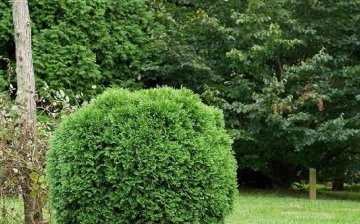
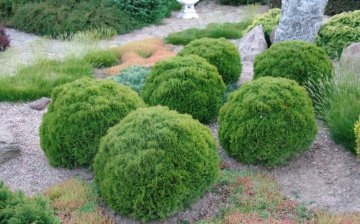

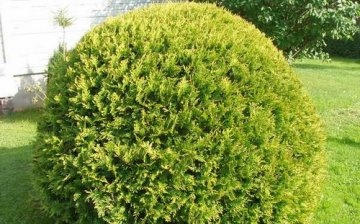




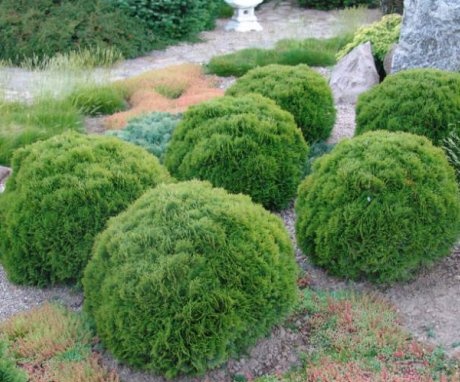
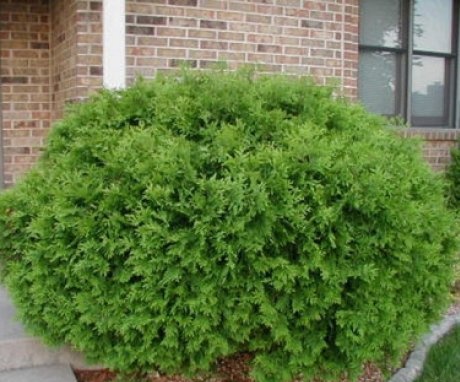
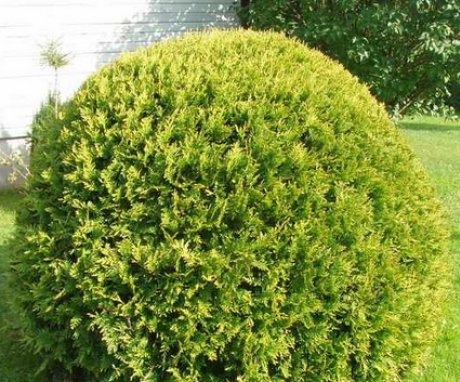
Cool tree, for a long time I want to plant it in the country, just there we are doing updates. So it is better to buy a small tree at once, and not grow it yourself from seeds?